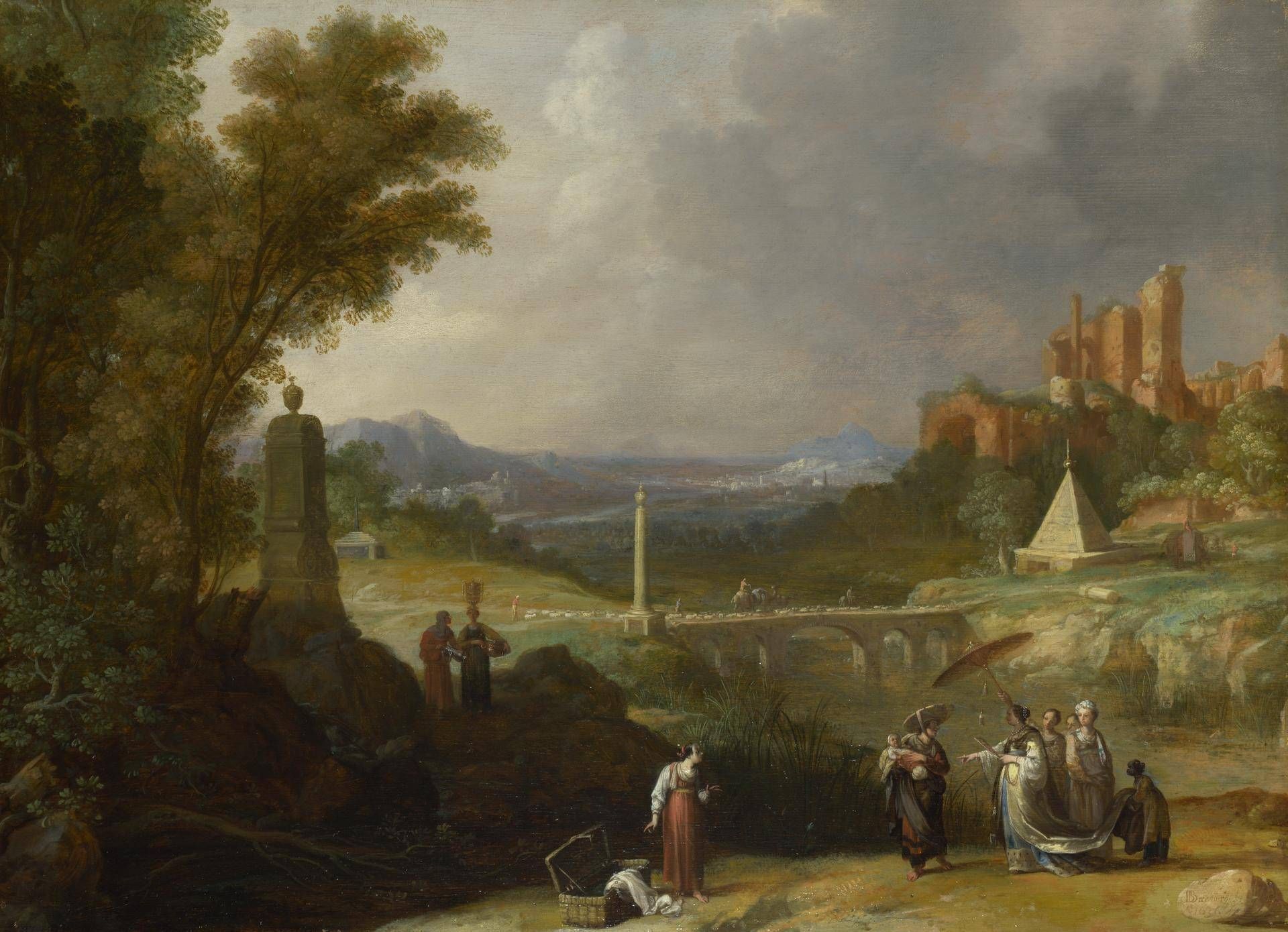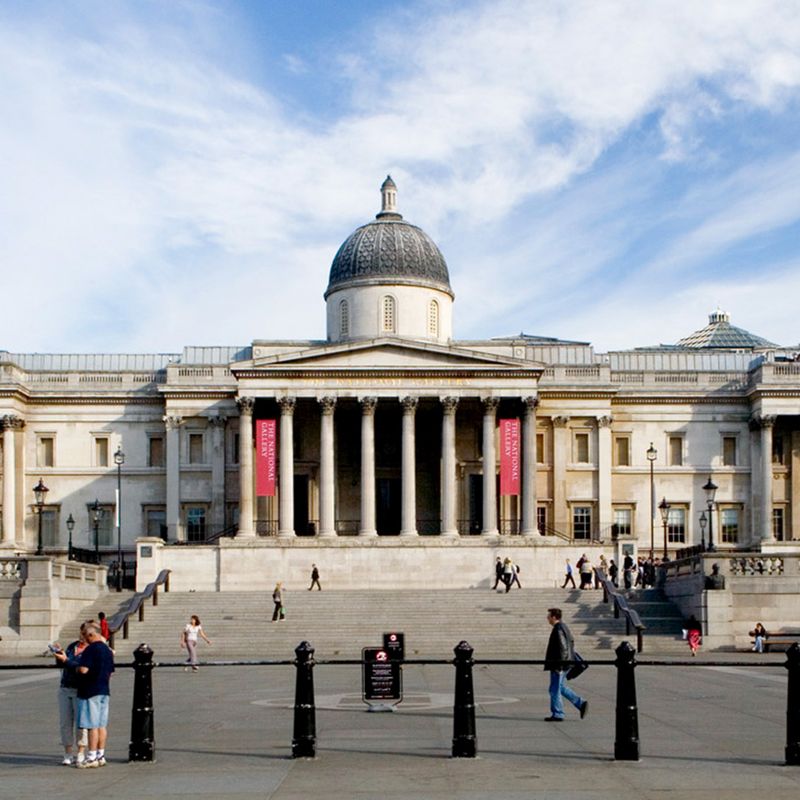
The Finding of the Infant Moses by Pharaoh's Daughter
Bartholomeus Breenbergh was an artist blessed with a vivid imagination and great skills in the painting of Antique monuments. He shows us an Old Testament story taking place in a completely imaginary Egypt, with luxuriant European foliage under a grey Northern sky and includes as many exquisitely detailed portrayals of antiquities as he can: obelisks, a column, a pyramid, and a stela (a carved commemorative stone slab). Not all these ancient objects are Egyptian but Breenbergh crowds them into the picture regardless, in order to convey that the story he tells is set in ancient times.
The painting shows the story of Moses. The children of Israel were captive in Egypt, and Pharaoh decreed that all their male children should be killed in case they grew up to fight the Egyptians and depose him. Moses's mother laid her baby in a rush basket and hid him among the reeds by the banks of the River Nile, leaving his sister Miriam to stand watch (Exodus 2: 1-6). The baby was found by Pharaoh's daughter who wanted to keep him, but needed a wet nurse to feed and care for him. Miriam volunteered to find one, reuniting the baby with his mother. Moses grew up to lead the Israelites to their Promised Land.
In the tradition of European painting of the time, Breenbergh painted Pharaoh's daughter as a wealthy European woman, in a robe of satin and fur that combines European and imaginary biblical clothes. She is covered in jewels and has a long train, held by a little Black girl. She shields her pale complexion against the sun under a round parasol. Miriam, much less finely dressed, points to the empty basket; her mother, holding the swaddled baby Moses, is bundled up in peasant's clothes and hat.
In the painting, the story of the finding of Moses is placed in the foreground, yet it is almost incidental to the landscape. In line with the traditional method of conveying depth, darker, clearer colours appear at the base of the canvas; mid-tones, mainly of greens, in the centre; and blue-greys at the top with less distinct painting of specific objects. It takes a moment or two to make out the tall mountain because it's so pale and blurred, almost blending into the sky - making it seem many miles away.
The painting of the antiquities is superb, however incongruous they may seem. Breenbergh will have taken them from etchings widely available in the Netherlands at the time. The central column works especially well - the sun glinting on the speckled, polished stone at the edge of the chasm down to the river. The pyramid too is convincing, picked out in the light, weather-beaten and ancient, the point on its silver globe reaching up towards the forest and the ruined castle towering overhead.
But perhaps the most appealing details are the two camels plodding across the perilous viaduct among the slow-moving flock of sheep and the two men with an elephant on the river bank in the sunshine.
Credit: Bequeathed by Richard Simmons, 1847
1636
Oil on wood
41.5 x 56.7 cm
NG208
Image and text © The National Gallery, London, 2025
Where you'll find this

National Gallery
Permanent collection





